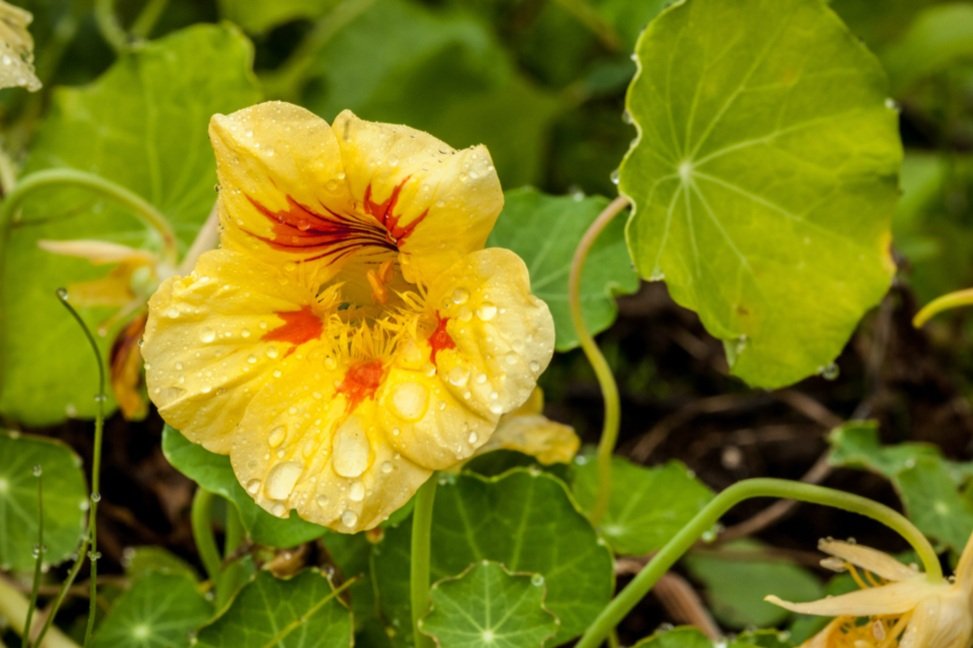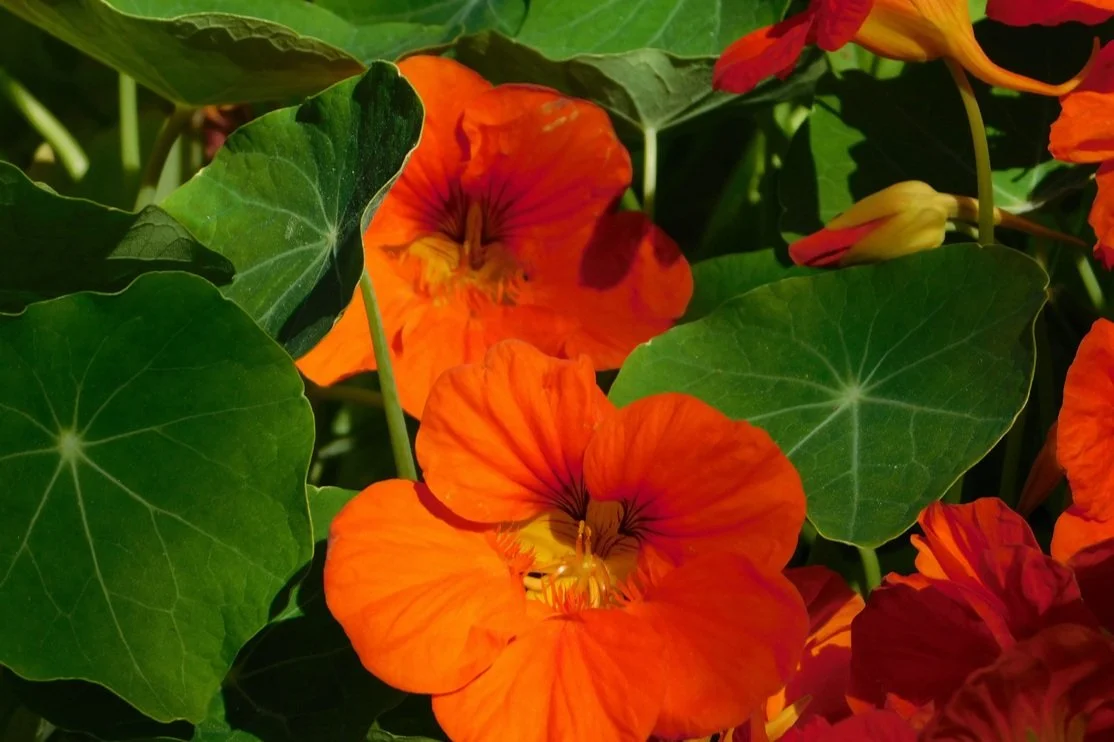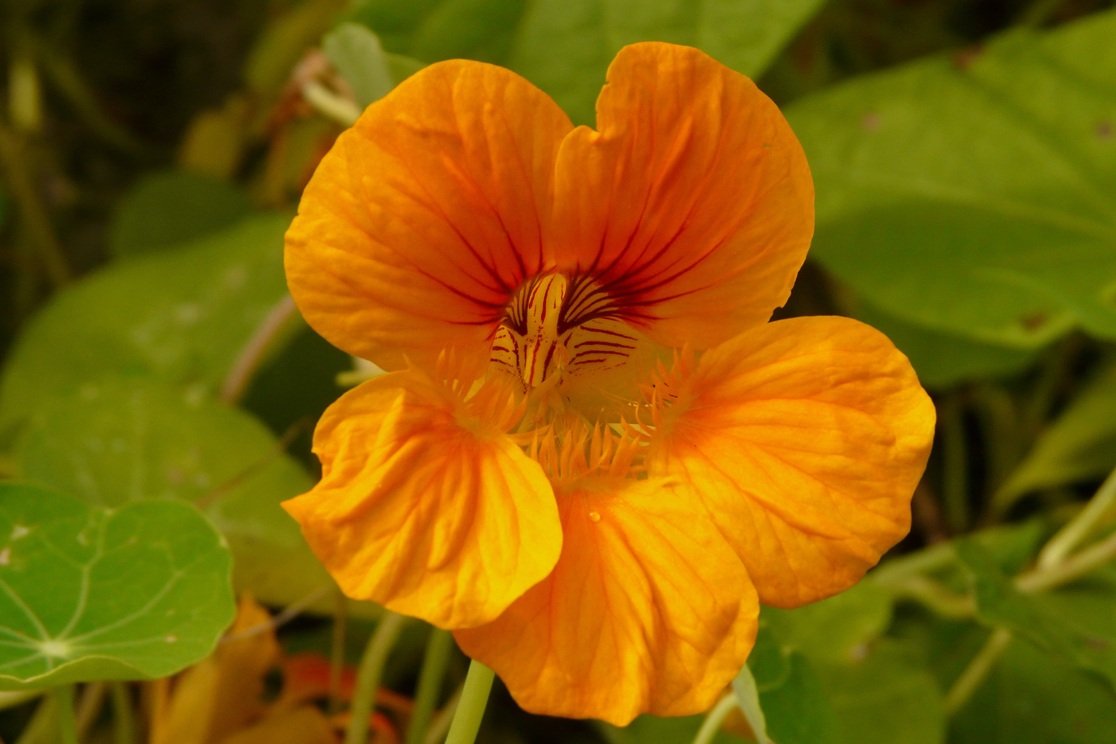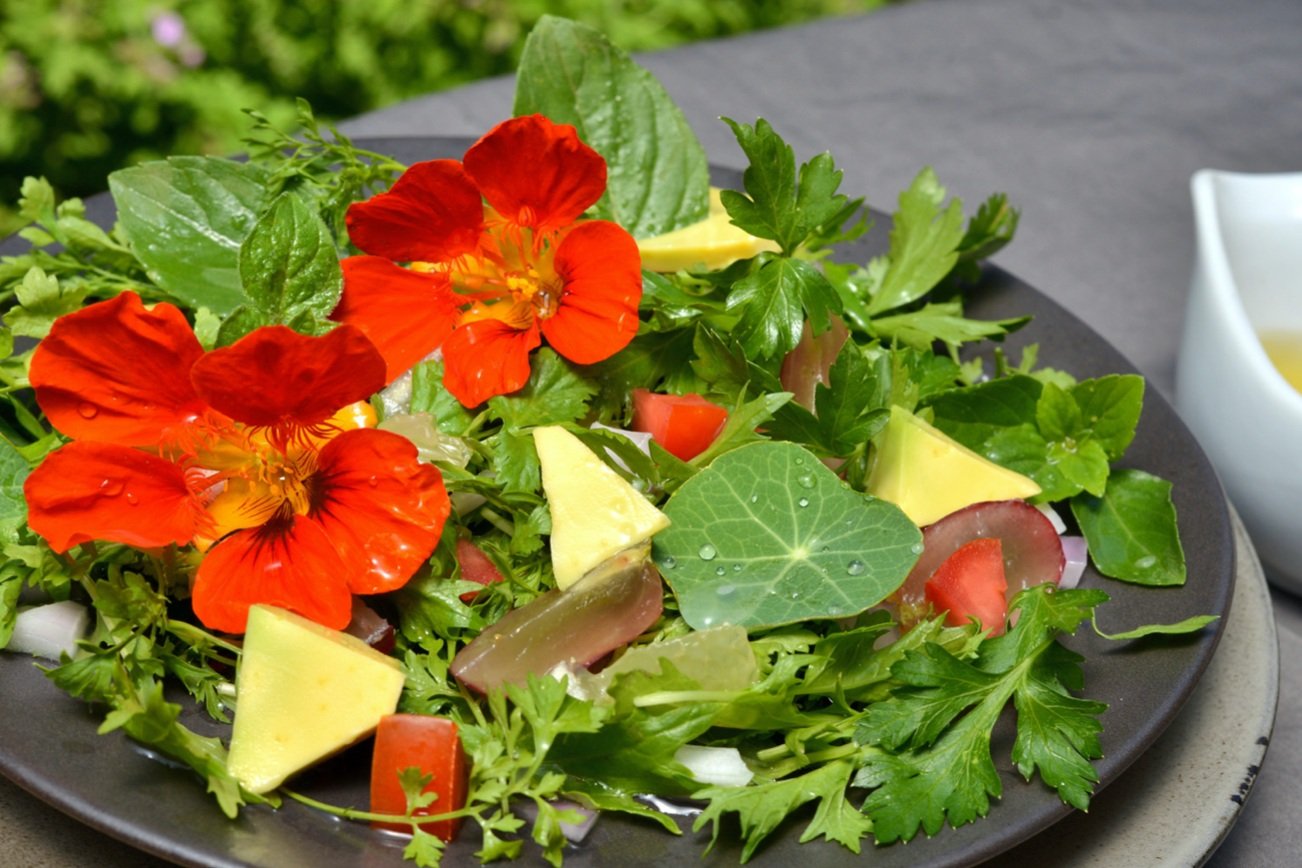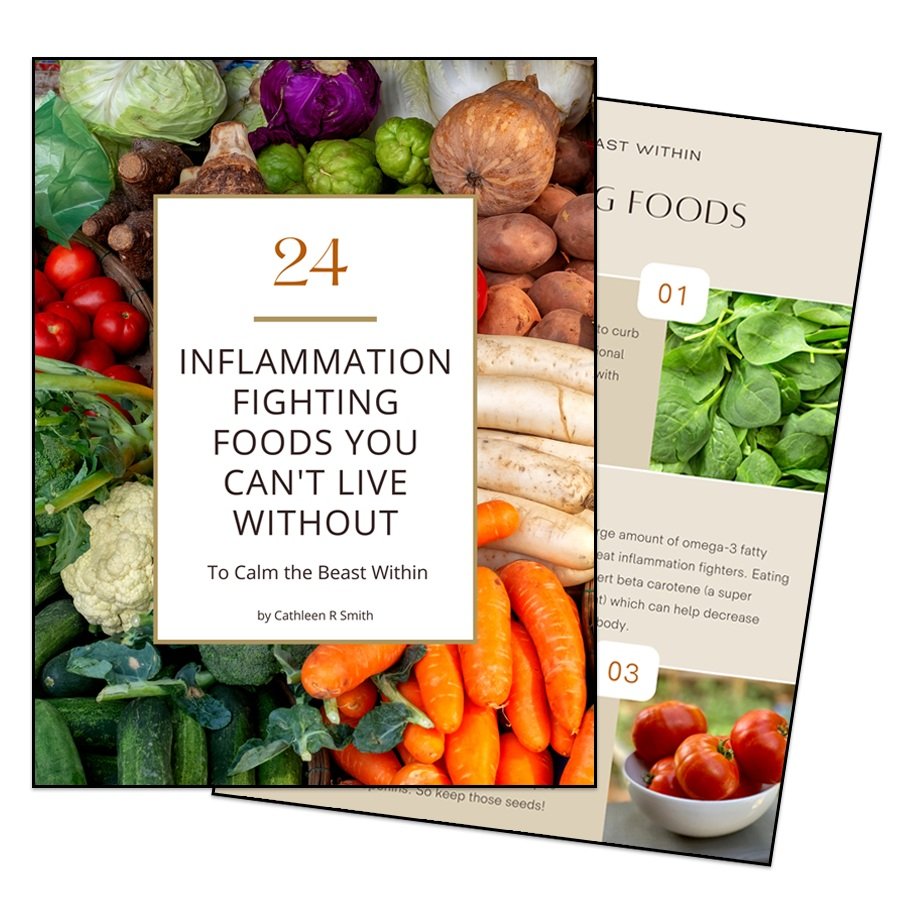Garden Nasturtiums: Sweet, Peppery & Spicy
Garden nasturtiums have been around for a very long time. Originally brought to North America by European immigrants, garden nasturtiums found their way into Thomas Jefferson’s garden around 1774. Resources say that Jefferson used the stems, leaves and flowers in salads and brined the seeds and buds (sort of like capers).
Today, the leafy and flowery parts of nasturtiums are still used in salads, as well as being added to soups and other dishes. Garden nasturtiums taste sweet and mildly peppery (sort of like watercress). And they also can be a little spicy. Try chopping up the stems and using like chives on a baked potato. Or use some garden nasturtium leaves along with basil leaves in pesto - check out my favorite recipe HERE.
Garden nasturtiums are medicinal plants, with lots of healing properties. They are a good source of micro elements which can be easily absorbed by the body. These micro elements include calcium, potassium, phosphorus and magnesium. Garden nasturtiums also contain macro elements like zinc, copper and iron.
Garden nasturtium leaves are high in Vitamin C, which helps to support your immune system. They also are a natural source of antioxidants, and studies have confirmed that garden nasturtiums positively influence the body’s circulatory system. And all parts of the plant are used in the treatment of various illnesses related to the respiratory, digestive and urinary systems.
There are many varieties of garden nasturtiums and they can be very different in structure, size and flower color. There are short shoots, long shoots, vines, semi-creeping and bushy or branchy plants. The most common garden nasturtium is Tropaeolum majus which is a climbing annual. Leaves can range from 2 to 5 inches and the 5-petal flowers are usually yellow, orange or red.
This year, I planted Cherry Rose Jewel Nasturtiums from Botanical Interests in my culinary nutrition garden. Garden nasturtiums do best when direct sowed about 1 to 2 weeks after your last frost date into soil that is well-draining. Be sure to soak the seeds for 12 to 24 hours before sowing - and keep them in a dark area while soaking. Darkness aids in germination.
Plant groups of 3 seeds every 8 to 12 inches. In a week or 2, little seedlings will begin to poke their way up. When your plants are about 2 inches tall, thin to 1 plant every 8 to 12 inches. Your plants will start blooming in late spring.
Garden nasturtiums like full sun, but will do okay in part shade. Deadhead spent blossoms to get more blooms and discourage seed production. Fertilizer usually isn’t necessary - but if your soil contains too much nitrogen, you’ll get lots of green leaves, but very few flowers. If needed, add a liquid fertilizer that contains phosphorus to counteract the nitrogen.
For an extra little kick to your salads and other dishes, try infusing vinegar with garden nasturtium flowers. Start with a really good champagne or white wine vinegar. Rinse the flowers to remove dirt (and any little critters) and stuff the blossoms into a sterilized clear jar. Pour the vinegar over the blossoms, seal the jar and store it in a cool, dry place for up to a month.
Once your vinegar is ready, strain through cheesecloth or a fine mesh bag into another sterilized clear jar. Your garden nasturtium vinegar will keep in a cool, dark place (like your pantry) for about 3 months. Or you can refrigerate for about 6 to 8 months. If the vinegar goes cloudy, it’s no longer any good.
As with most edibles, there is the possibility that you may have a sensitivity to garden nasturtiums. The seeds are the most toxic part of the plant, and while they are often brined like capers, it’s more common to consume the flowers, leaves and stems.
Now you know that garden nasturtiums can be a great addition to your culinary nutrition garden.
Learn about other foods that you can plant for optimal health - especially ones that are commonly eaten to fight chronic inflammation. Join my email list and get your FREE downloadable guide to 24 Inflammation Fighting Foods You Can’t Live Without.
Happy gardening!



